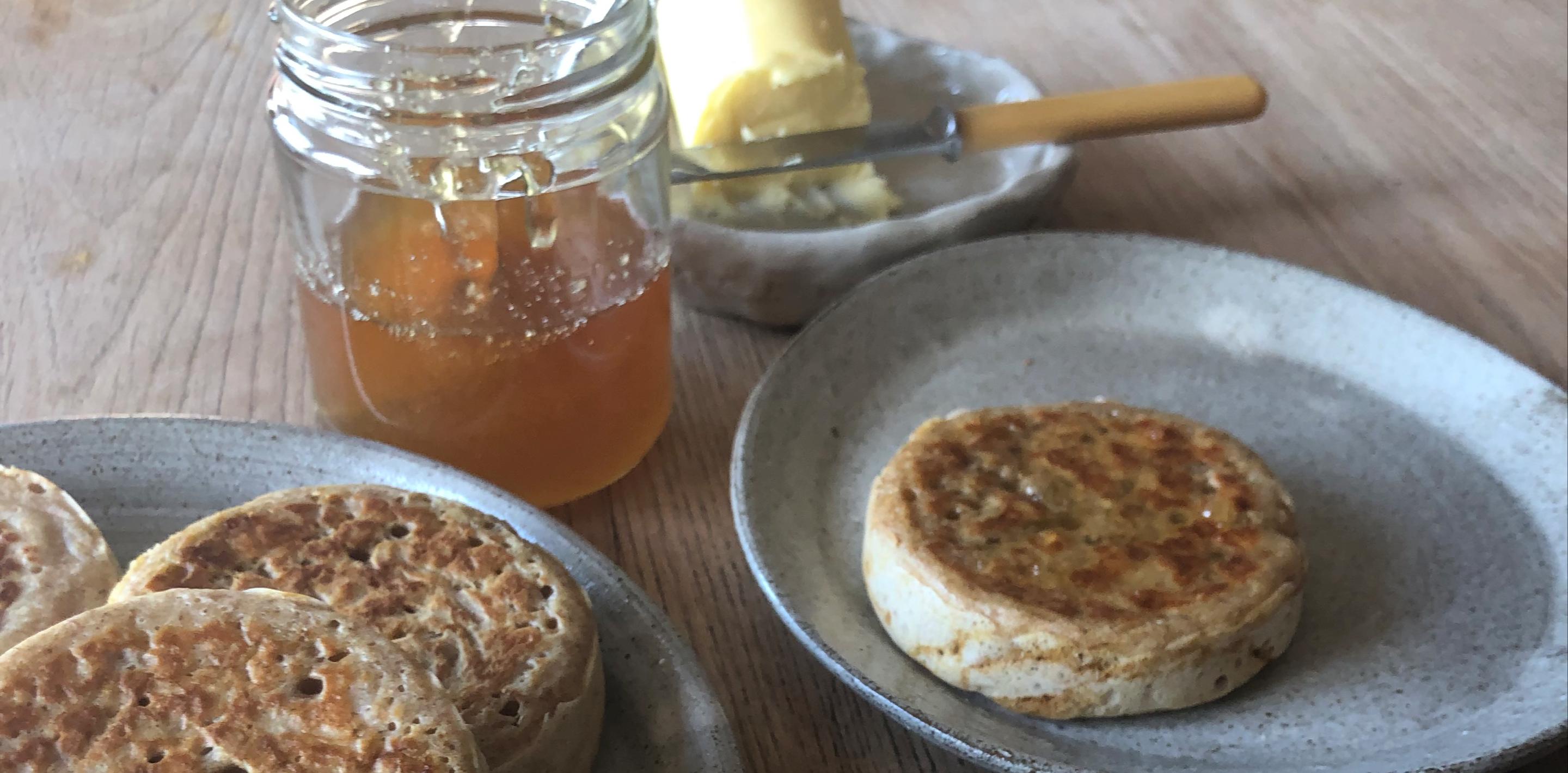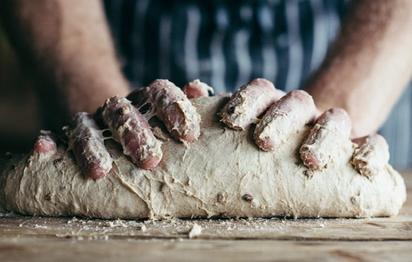
Sourdough crumpets
Makes about 15
2 tbsp active sourdough starter
100g white bread flour
100g wholemeal bread flour
About 250ml water
1 tsp sea salt
1 tsp bicarbonate of soda
Light rapeseed oil, for cooking
In a large bowl, mix the sourdough starter with both flours and enough water to let it down to a loose batter consistency – about 250ml. Leave the batter in a warm place for several hours or overnight, until bubbling and frothing. If you have plenty of live, bubbly starter, you can actually make crumpets with it as is, instead of discarding it. Leave just enough starter for your next loaf.
When you are ready to cook, preheat the oven to a very low heat – around 80°C, or the gas at its lowest heat. Sprinkle the salt and bicarbonate of soda over the bubbly surface of the crumpet batter and whisk them in.
Have a little dish of oil and a pastry brush at the ready. Heat a large heavy-based frying pan or griddle over a medium heat and brush a little oil over the base. Use a brush to liberally oil the inside of four 8.5-9cm diameter crumpet rings. Make one tester crumpet first: put one ring in the pan and use a small ladle or mini measuring jug to pour in about 50ml batter. The crumpet ring should be barely half full. Let the batter cook, slowly bubbling and rising, until the crumpet is full of holes, nearly all ‘set’ and there’s only a little uncooked batter still visible in the middle of the top. This will take 6-8 minutes – but watch your crumpet rather than the clock! Keep an eye on the heat of the pan – it should be moderate to keep the crumpets cooking, but not so hot that the base burns. When the crumpet is nearly completely set, you should be able to use tongs to lift the crumpet ring off. Then use a spatula to gently flip the crumpet over. If the ring won’t come off, flip the whole thing over and gently press the crumpet down so its uncooked surface is in contact with the pan. Cook it for a further 1-2 minutes, until the top is just lightly coloured. Transfer the cooked crumpet to a dish and put in the warm oven.
This test run will tell you if your batter is the right consistency: if the batter runs out from under the ring, it is too runny; if no holes appear in the crumpet, it is too thick. Add a little more flour or water to the batter respectively.
Cook the rest of the batter in the same way, re-oiling the rings and the pan in between each batch. You might be able to get three or four crumpet rings going at the same time (if your pan is big enough) but take it easy or it can quickly go south!
You can serve the freshly cooked crumpets straight away with butter, and of course, a trickle of honey. But they are arguably even better the next day, reheated in the toaster.
For more wholer baking recipes, and to see how Hugh’s own bees are getting on, follow his adventures on Instagram @hughfearnleywhittingstall
Lean more and take your baking to a new level

River Cottage baker Andy Tyrrell teaches you the art of sourdough and wild yeast baking. You'll be baking as you learn.
Wild yeast is all around us, the joy of foraging into flour and water to create your natural starter can be a life-long journey. Looked after correctly, your sourdough starter will provide you with the fantastic reward of your own sourdough creations for years to come.
As one of the courses in the River Cottage Cooking Diploma 'Sourdough and Wild Yeast Baking' will inspire you to experiment with new baking techniques and recipes.
